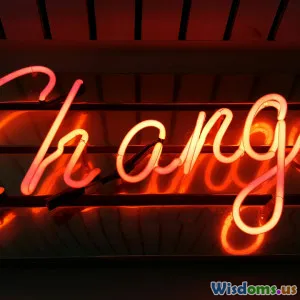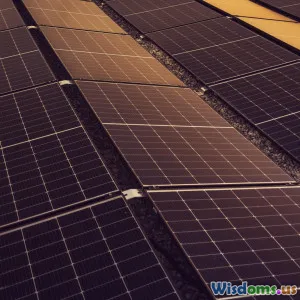
Can AI Detect Spirits Debunking the Latest Tech Myths
7 min read Explore the truth behind AI's claim to detect spirits and debunk the myths blending technology with the supernatural. (0 Reviews)
Can AI Detect Spirits? Debunking the Latest Tech Myths
Introduction
In recent years, there's been a fascinating surge of interest at the crossroads where technology meets the supernatural. From AI-powered paranormal apps to smart devices that claim to capture ghostly presences, the idea that Artificial Intelligence can “detect spirits” is making waves in both tech circles and paranormal communities. But how much of this is compelling innovation, and how much is simply wishful thinking fueled by popular myths? This article takes a critical and deeply insightful look into the claim: Can AI detect spirits? By examining how AI technology works, the nature of paranormal investigation, and myths around these subjects, we aim to separate science fact from supernatural fiction.
Understanding AI: What Can It Really Do?
Artificial Intelligence is essentially a set of algorithms designed to detect patterns and make decisions based on data. AI excels at recognizing speech, images, and even predicting behaviors where there are large, consistent data sets available.
AI’s Strengths in Pattern Detection
For example, Google’s DeepMind and OpenAI can sift through massive amounts of data to identify subtle patterns humans might miss. This capability lends itself well to fields like medical diagnosis and weather prediction.
Limitations Around Subjectivity and Unknown Phenomena
The core challenge with spirits and paranormal entities is that there exists no scientifically agreed upon, verifiable data representing them. Unlike faces or speech, there is no baseline “pattern” AI can learn, train on, or recognize. Ghost detection doesn’t have a defined data signature that can be reliably captured or standardized.
The Rise of AI ‘Ghost Hunting’ Tools
Seeing an opportunity, some developers have created apps and devices that claim to leverage AI to detect spirits. Many use sensors that track electromagnetic fields (EMF), temperature variations, or sound anomalies, feeding this data into AI models.
Examples of Popular AI Paranormal Apps
- Ghost Radar Classics: Claims to analyze sensor data and alert the user of paranormal activity.
- Spirit Detector AI: Uses smartphone sensors and AI image processing for alleged spirit detection.
Yet, none of these have passed scientific peer review or validation. Their AI models typically analyze environmental fluctuations—often attributable to mundane sources, such as electrical interference or background noise.
Common Reasons Misinterpret AI “Findings”
User biases, expectation effects, and random data fluctuations often get interpreted as paranormal confirmation. Confirmation bias makes people see what they want to see.
Scientific Scrutiny: Why AI Cannot Detect Spirits Yet
The supernatural realm—if such exists—is inherently indefinable by current empirical standards.
Lack of Verifiable, Repeatable Data
Science relies on reproducible experiments and verifiable data. Paranormal events are anecdotal, highly subjective, and occur sporadically. AI needs consistent datasets for accurate learning.
The Problem of False Positives and Noise
AI systems trained on electromagnetic or sensory readings only detect changes in the environment, often caused by non-paranormal sources like faulty wiring or temperature shifts.
Dr. Karen Stollznow, a well-known skeptic and linguist, has pointed out: “Attributing random environmental noise to spirits without rigorous controls is a misuse of technology… AI has no magical insight.”
Why Do These Myths Persist?
Popular Culture’s Influence
Shows, movies, and online content often mix speculative technology and the supernatural to captivate audiences.
Desire to Bridge Science and Mystery
Humans have a deep fascination with the unknown. AI's portrayal as an all-powerful problem solver seems to promise answers to age-old supernatural questions.
Accessibility of Tools for Amateur Paranormal Researchers
Affordable sensors and AI apps empower enthusiasts with tools but without scientific training, misinterpretation is a frequent trap.
Nuanced Perspectives: Where Tech and Paranormal Investigation Meet
Using AI for Data Organization—Not Spirit Detection
Some professional investigators use AI to manage large datasets from EVP (Electronic Voice Phenomena) or video surveillance, facilitating review but not confirming spirits.
Potential Future Developments
If ever a universally observable trait of spirits is discovered, AI could help analyze this data, but that's a prerequisite for successful detection.
Conclusion: Separating Hype from Reality
While AI holds transformative promise across many fields, using it to detect spirits currently falls into the realm of myth and speculative fiction rather than science. The lack of reliable datasets, reproducibility, and theoretical foundation makes AI ghost detection scientifically untenable.
However, skepticism doesn’t diminish our curiosity or the cultural narrative surrounding the supernatural. Technological advancements and rigorous scientific methods could someday bring new insights. Until then, it’s crucial to approach such claims critically, recognizing that what might seem like paranormal AI “evidence” is often modern technology interpreting natural-physical phenomena misunderstood along the way.
Takeaway for Readers
Next time you hear about AI ghost detectors, remember: the real power of AI lies in data-driven, evidence-based applications—not in fueling supernatural myths. Appreciating technology for what it truly can do allows us to separate fascinating myths from meaningful reality.
References:
- Stollznow, K. (2019). Skepticism and Technology. Paranormal Journal.
- National Science Foundation: Understanding AI and Data Limitations, 2023.
- Parapsychology Today: The Challenges of Paranormal Science, 2022.
Image suggestion: a split image illustrating a glowing ghostly figure on one side and an AI neural network processed data cluster on the other to emphasize the contrast.
Rate the Post
User Reviews
Popular Posts




















